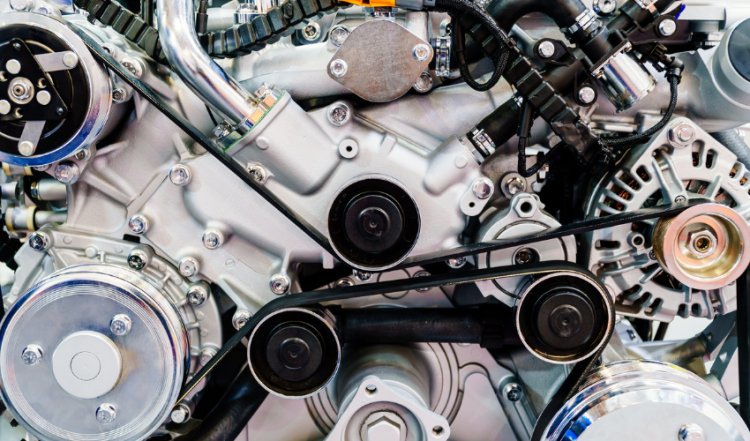After understanding how different powertrains perform environmentally, it’s essential to look at the financial side. In this second part, we’ll focus on Total Cost of Ownership (TCO), operational costs, and how each powertrain fits different types of fleet needs.

Choosing the right powertrain for your fleet goes beyond environmental concerns; it is also a financial decision. While Part I explored how different powertrains perform environmentally, this second part focuses on Total Cost of Ownership (TCO), operating expenses, and how each option aligns with your fleet’s specific needs. From fuel costs to maintenance and long-term savings, understanding these factors will help you make informed and profitable decisions.
Comparing Energy Consumption, CO₂ Emissions, and TCO
The global push towards sustainability has sparked increased interest in reducing the carbon footprint of commercial vehicle fleets. For fleet managers, choosing the right powertrain is crucial to balancing CO₂ emissions and cost efficiency. It is essential to consider not only energy consumption and environmental impact but also acquisition and implementation costs and their influence on fleet performance across various routes. The goal is to build an environmentally friendly and economically viable fleet.
Determining the Total Cost of Ownership (TCO) by Powertrain
The TCO of a fleet vehicle includes its purchase price, fuel/energy costs, maintenance, and depreciation. For fleet managers considering new powertrains, balancing TCO with CO₂ reductions is key:
Internal Combustion Engine (ICE) Vehicles
Traditionally lower upfront costs but subject to high fuel and maintenance costs, ICE vehicles often yield a higher TCO over time than EVs and hybrids. Additionally, fuel price fluctuations make operational expenses less predictable.
Electric Vehicles (EVs)
Although EVs require a higher initial investment, their lower energy costs, fewer moving parts, and reduced maintenance needs can lead to significant long-term savings. EVs also benefit from government incentives in many regions, further offsetting costs and making EV adoption more financially viable. Studies suggest that when used in urban settings, EVs can achieve a TCO parity with ICE vehicles in less than five years.
Hybrid Vehicles
Hybrids occupy a middle ground, typically offering lower fuel costs than ICEs with moderate maintenance costs due to their dual power sources. For fleets operating across urban and highway routes, hybrids can provide a balanced TCO with reduced CO₂ emissions.
Fuel Cell Vehicles (FCEVs)
FCEVs currently have higher initial costs and rely on limited refueling infrastructure. However, for high-mileage fleets operating on dedicated routes, their TCO may decrease as hydrogen infrastructure expands, especially in Europe, where the European Union's Green Deal encourages FCEV adoption.
Choosing the Best Powertrain for CO₂ Reduction and Cost Savings
Factors such as route type, mileage, available infrastructure, and regulatory compliance are critical for fleet managers deciding on the optimal powertrain. Here's a quick breakdown:
- For urban, short-range routes, EVs typically offer the lowest TCO and most significant reduction in CO₂ emissions;
- Hybrids can reduce fuel costs and emissions for mixed urban highway routes, particularly with frequent stop-start conditions;
- FCEVs and advanced ICE options with biodiesel or low-sulfur diesel may offer a viable balance of TCO and emissions management for long-distance, high-mileage routes.
With increasingly strict emissions regulations, especially in Europe, fleet operators must adapt to greener powertrains. Initiatives like the European Commission's CO₂ emission standards for heavy-duty vehicles encourage fleets to adopt low and zero-emission solutions. Moreover, embracing a mix of powertrains based on operational needs can help fleet managers reduce emissions and optimize costs effectively.
At Frotcom, we specialize in comprehensive fleet management solutions that assist fleet managers in optimizing route planning, monitoring fuel consumption, and managing CO₂ emissions. Learn more about how our fleet management software can help streamline your operations toward a more sustainable and efficient future.
Finding the Right Balance for Your Fleet
Choosing the right powertrain requires a balanced approach, considering cost and environmental impact. By analyzing TCO alongside emissions, fleet managers can align their choices with both operational needs and sustainability goals. Frotcom’s fleet management solutions provide the tools you need to track fuel consumption, plan efficient routes, and monitor CO₂ emissions, supporting your transition to a greener fleet.
Missed Part I? Discover the environmental impact of different powertrains in our previous article.
Looking to optimize your fleet? Contact us to explore how our advanced solutions can support your transition to a more efficient and sustainable fleet.
- Frotcom
- Powertrain
- Fleet sustainability
- Fleet management
- Internal Combustion Engine (ICE)
- Electric Vehicles (EV)
- Hybrid Vehicles
- Fuel Cell Electric Vehicles (FCEVs)
- CO₂ emissions
- Total cost of ownership
- TCO Analysis
- Fuel efficiency
- Sustainable fleets
- Green Fleet Solutions
- Fleet optimization
- Energy efficiency
- Transport efficiency

